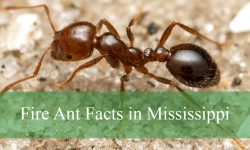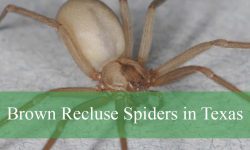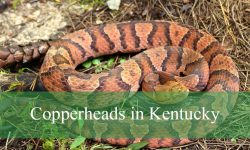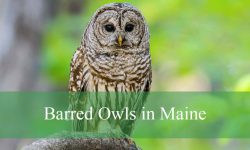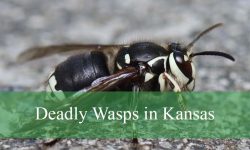Vermont, with its lush forests, meadows, and vibrant gardens, is a hidden gem for birdwatchers. Among the many avian species that grace the Green Mountain State, hummingbirds are a favorite for both beginners and experienced bird enthusiasts. Despite Vermont’s northern location, these tiny, iridescent birds migrate to the state during warmer months, delighting observers with their dazzling colors and acrobatic flight.
Although only a few species are commonly seen, each hummingbird in Vermont has unique characteristics that make it easy to identify with careful observation. Knowing what to look for in terms of appearance, size, behavior, and habitat can significantly enhance your birdwatching experience.
In this guide, we focus on the two main types of hummingbirds that inhabit Vermont, providing detailed descriptions, identification tips, and expert advice on when and where to spot them. Whether you want to attract these birds to your backyard or simply observe them in the wild, this article will serve as a comprehensive resource.
Ruby-throated Hummingbird (Archilochus colubris)
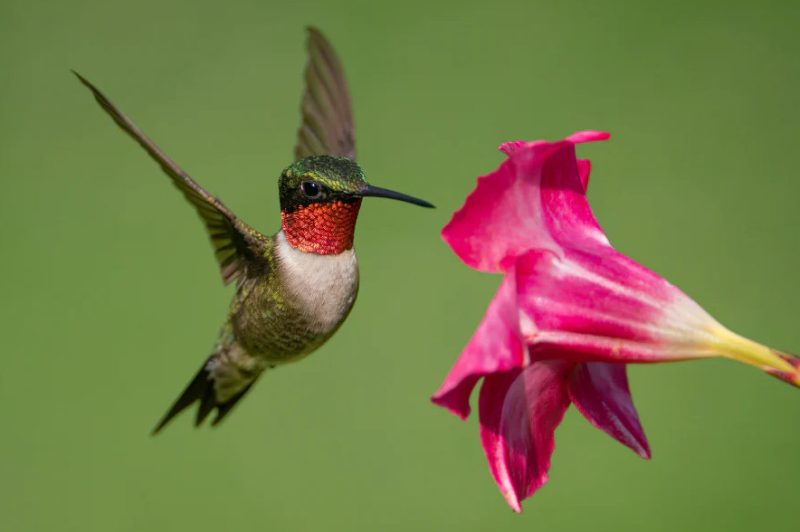
Identification and Physical Characteristics
The Ruby-throated Hummingbird is the most common and iconic hummingbird species in Vermont. Adult males are instantly recognizable due to their iridescent ruby-red throat patch, called a gorget, which gleams brilliantly in sunlight. Their backs and head are metallic green, and their underparts are white with subtle grayish flanks. Female Ruby-throated Hummingbirds lack the bright red throat but display a soft green back and white underparts, sometimes with faint streaks along the sides.
Ruby-throated Hummingbirds are small, measuring around 7–9 cm (2.8–3.5 inches) in length, with a wingspan of 8–11 cm (3–4.3 inches). They weigh only 2–6 grams, making them incredibly lightweight, yet remarkably agile in flight. One of their distinctive identification features is their rapid, almost humming engine-like wing beats, which occur at 50–70 beats per second.
Behavior and Feeding
These hummingbirds are highly energetic and territorial, especially males during the breeding season. Ruby-throated Hummingbirds feed primarily on nectar from tubular flowers and supplement their diet with small insects and spiders for protein. Their hovering ability allows them to feed mid-air, often visiting feeders filled with sugar water or native flowering plants.
Males perform a spectacular U-shaped courtship dive, showcasing their vibrant throats to attract females. Despite their tiny size, they are fearless defenders of feeding territories and will chase away intruders, including larger birds.
Habitat and Range in Vermont
Ruby-throated Hummingbirds are most commonly found in deciduous and mixed woodlands, forest edges, meadows, and gardens. They favor areas with abundant flowering plants, shrubs, and feeders. During migration, they can be spotted in a variety of habitats, including parks and suburban areas.
These hummingbirds are summer visitors, arriving in Vermont from late April to early May and staying until September. The best locations to observe them include flowering gardens in Burlington, Shelburne, and along lake shores, as well as woodland edges throughout the state.
How to Attract Ruby-throated Hummingbirds
To attract Ruby-throated Hummingbirds, use bright red feeders filled with a mixture of four parts water to one part white granulated sugar. Avoid using honey or artificial sweeteners, as they can be harmful. Planting native nectar-rich flowers such as bee balm, cardinal flower, and trumpet creeper can also provide natural feeding sources.
Providing perching spots, like small branches or twigs near feeders, gives them a place to rest while maintaining their territory. Regularly cleaning feeders is essential to prevent mold or fermentation that could harm these delicate birds.
Best Time and Places to Observe
-
Spring and Summer (May–September): Peak abundance when nesting and feeding.
-
Top Observation Spots: Burlington botanical gardens, Shelburne Farms, and scattered woodland clearings.
Birdwatchers should visit early morning or late afternoon, when hummingbirds are most active and feeding frequently.
Rufous Hummingbird (Selasphorus rufus)
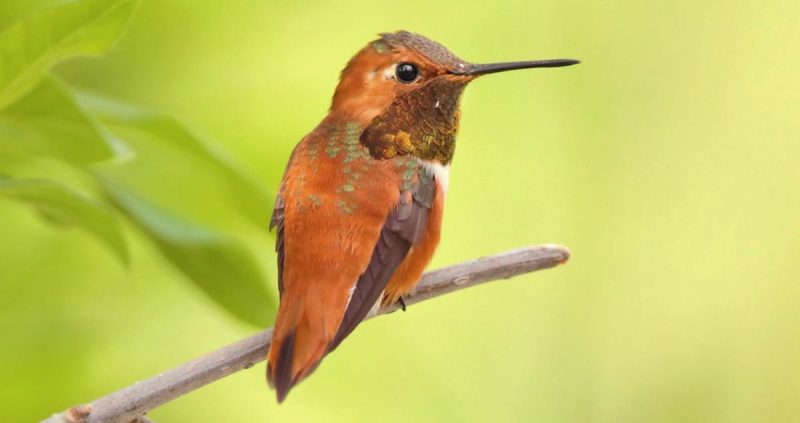
Identification and Physical Characteristics
The Rufous Hummingbird is a less common visitor in Vermont, typically seen as a vagrant during migration. Males are striking, with a vivid orange-red throat and flanks, complemented by a bright green back and rump. Females are more subdued, with green backs, white underparts, and faintly spotted throats. Unlike the Ruby-throated, the Rufous has a more fiery orange coloration along the sides, which is a key field mark for identification.
Rufous Hummingbirds are slightly smaller than Ruby-throated, measuring 7–8 cm (2.7–3.1 inches) in length with a wingspan of 8–11 cm (3–4.3 inches). They weigh roughly 3–5 grams and are known for their feisty, aggressive behavior, particularly when defending nectar sources.
Behavior and Feeding
Rufous Hummingbirds are extremely territorial, often displacing other hummingbirds, including Ruby-throateds, from feeders and flower patches. They feed primarily on nectar, favoring tubular flowers such as columbine, penstemon, and trumpet vine, and also hunt tiny insects for protein.
During migration, they exhibit remarkable stamina, traveling over 3,000 miles from their wintering grounds in Mexico and the southern United States to their breeding areas in the Pacific Northwest. Their flight pattern is fast and direct, with frequent hovering near flowers or feeders.
Habitat and Range in Vermont
Rufous Hummingbirds are generally rare in Vermont, appearing mostly during the late summer and early fall as they stray from their usual Pacific Coast migration route. They can be spotted in gardens, forest edges, and meadows, especially where abundant nectar-rich flowers are available.
Their presence in Vermont is unpredictable, but backyard feeders in southern and central Vermont often attract these adventurous visitors. Observing a Rufous Hummingbird is considered a special treat due to its rarity and vivid coloration.
How to Attract Rufous Hummingbirds
Because Rufous Hummingbirds are highly territorial, providing multiple feeders can reduce conflicts and allow more than one hummingbird to feed at a time. Use the same sugar-water solution (4:1 ratio) and plant native flowers with vibrant colors. Bright orange, red, or pink flowers tend to attract them more effectively.
Ensuring safe, quiet garden areas with perching spots will encourage these transient visitors to linger, giving birdwatchers a chance to observe their behavior up close.
Best Time and Places to Observe
-
Late Summer to Early Fall (August–September): Peak time for vagrant Rufous sightings.
-
Observation Locations: Southern Vermont gardens, Lake Champlain shorelines, and open woodland patches with abundant flowers.
Patience is key when observing Rufous Hummingbirds, as they may appear for only a short period before continuing their migration journey.
Hummingbird Watching Tips in Vermont
Use of Feeders
Feeders are one of the most reliable ways to attract hummingbirds. Place them in shaded areas to prevent nectar from spoiling quickly and near flowering plants to mimic natural feeding conditions. Clean feeders every few days, especially in warm weather.
Planting Native Flowers
Planting a variety of nectar-rich native flowers can help hummingbirds thrive in your backyard. Some favorites in Vermont include bee balm, cardinal flower, columbine, trumpet creeper, and jewelweed. These not only provide food but also serve as natural perches and shelter.
Observing Behavior
Spend time observing hummingbirds’ territorial displays, feeding strategies, and courtship flights. Take note of plumage differences, especially throat coloration, which is often the most reliable identification marker.
Seasonal Awareness
Ruby-throated Hummingbirds are common from late April to September, while Rufous Hummingbirds are rare visitors typically observed in late summer. Timing your birdwatching excursions to coincide with these periods increases your chances of sightings.
Photographic Opportunities
To capture high-quality photos, use a fast shutter speed to freeze rapid wing movements. Position feeders or flowering plants in areas with good natural lighting, and be patient to allow birds to settle near your camera.
FAQs About Hummingbirds in Vermont
How many species of hummingbirds are found in Vermont?
Vermont hosts mainly two species: the Ruby-throated Hummingbird (common) and the Rufous Hummingbird (rare vagrant).
When do hummingbirds arrive in Vermont?
Most Ruby-throated Hummingbirds arrive in late April to early May. Rufous Hummingbirds may appear rarely in late summer.
What should I feed hummingbirds?
A simple solution of four parts water to one part white sugar works best. Avoid honey or artificial sweeteners.
How can I identify a male Ruby-throated hummingbird?
Male Ruby-throated Hummingbirds have a brilliant red throat patch, metallic green back, and white underparts.
Can Rufous Hummingbirds be attracted to feeders in Vermont?
Yes, but due to their territorial behavior, using multiple feeders and bright flowers helps attract them safely.
Conclusion
Hummingbirds add magic to Vermont’s gardens, meadows, and woodlands. Whether you are an avid birdwatcher or a casual observer, understanding the unique traits, behaviors, and habitats of the Ruby-throated and Rufous Hummingbirds ensures a rewarding experience. With proper feeders, native flowers, and careful observation, these tiny jewels of the avian world can be enjoyed up close during the warm Vermont months.

